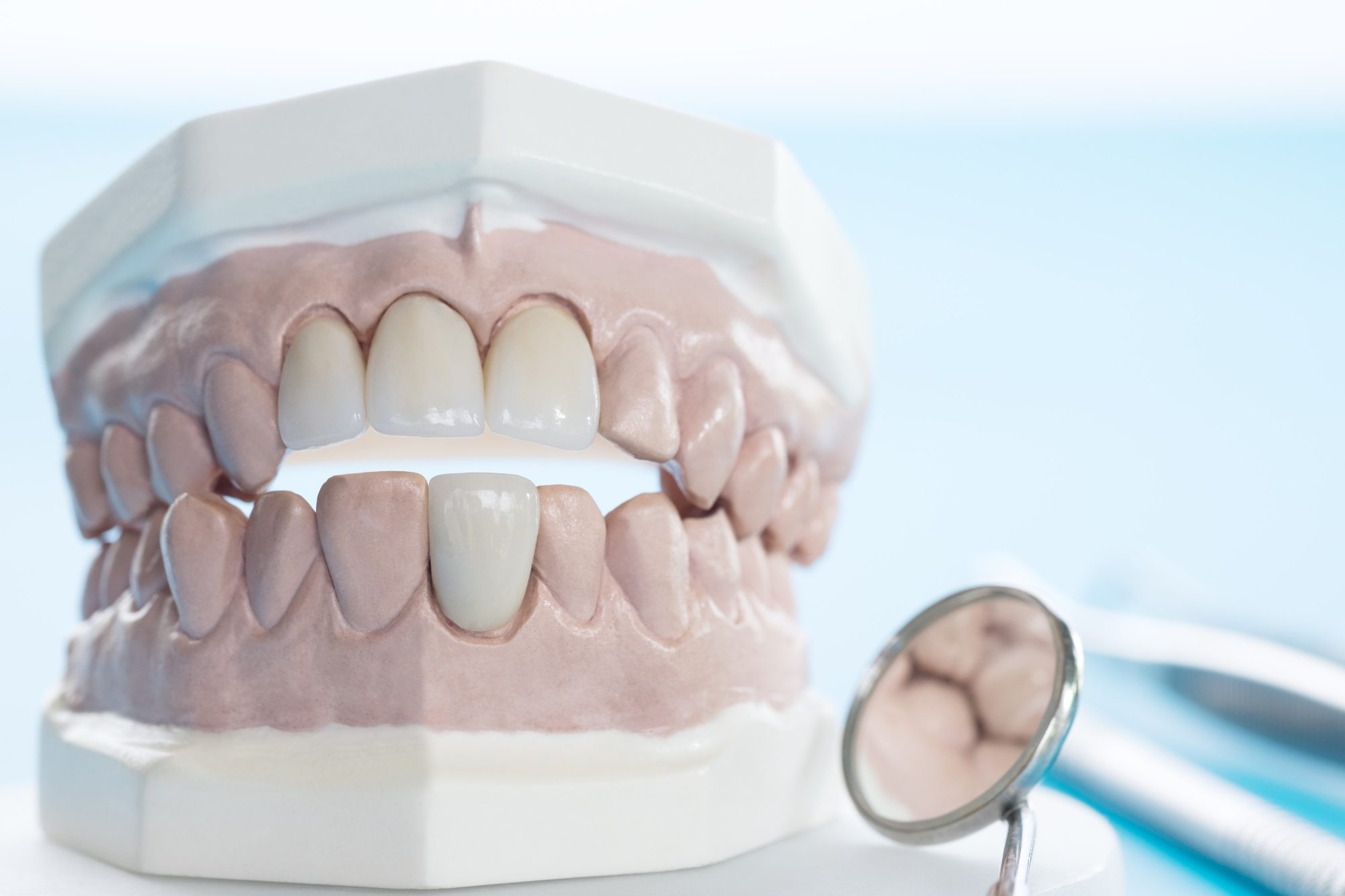For many, hearing the word “root canal” evokes feelings of fear and anxiety. Thankfully, we have seen years of medical advancements that have made a once-painful process into a routine procedure that can save your tooth.
So, what exactly is this procedure, and why might you need it? Read on to find out everything you need to know about a root canal and why your dentist may recommend it.

What is a Root Canal?
Did you know your pearly whites are made up of more than just the hard exterior you’ve been using to chew your food? Teeth, like onions, have layers. There is the hard outer shell of enamel, the softer middle layer of dentin, and an inner layer called the pulp (or nerve) of the tooth. The pulp can get infected and inflamed causing pain, which then leads to swelling and an abscessed tooth. This can be caused by a large cavity, trauma, a crack, or if multiple dental procedures have been done to a tooth over time.
The good news is there’s no need to stress if your dentist has recommended a root canal. They will be cleaning out the pulp and bacteria inside the root, saving your tooth. Another option is to remove it altogether, which isn’t typically recommended. Saving the natural tooth has several benefits over extraction, such as:
- Normal biting force, feeling, and efficient chewing.
- Prevent other surrounding teeth from shifting.
- Your teeth will have their most natural appearance.
- In general, having a root canal is less expensive than other tooth replacement options.
Do root canals hurt?
Root canals aren’t generally any more painful than other typical dental procedures, like having a tooth removed or a filling done. Any discomfort can be managed with adequate local anaesthesia during the procedure, and tylenol/advil for a few days afterwards. Most patients feel a lot of relief after the procedure is complete.
Signs Your Dentist May Recommend a Root Canal
Chances are, you’re one of two people. You either book your 6-month cleanings and exams on time, or you wait for something to hurt. The former can save you a lot of pain, whereas the latter only allows you to have reactive solutions instead of proper preventative measures or proactive options.
Toothaches don’t usually present with a sudden overwhelming wave of pain when you take a bite of your morning cereal. There are usually warning signs over a period of time. That’s why it’s essential to get regular check-ups so your dentist can ask questions and look out for the following signs and symptoms:
- Tooth pain – this can feel like a dull ache or throbbing pain.
- Sensitivity to heat or cold, especially if it lingers for more than a few minutes.
- Swollen and tender gums.
- Pimples or boils on the gums.
- A swollen jaw.
- Tooth discoloration.
- A cracked or chipped tooth.
- A loose tooth.
- Pain when pressure is applied.
How to Prepare for a Root Canal
There’s nothing out-of-the-ordinary that you’ll need to do to prepare for a root canal treatment. If you’re prescribed an anti-inflammatory or antibiotic before your appointment, it’s important that you follow the instructions to take them as needed. Your dentist may recommend it if there’s a lot of infection.
Unless otherwise directed, make sure you eat a healthy meal before your appointment. You’ll be numb for a few hours, so chowing down may be messier than you anticipated if you wait until after.
The Root Canal Process
The root canal process is usually straightforward with your dentist. On average the procedure can take 1-2 hours. Your dentist may also refer you to an endodontist, a root canal specialist. Here’s exactly what to expect throughout the process:
Step 1: Anaesthetic.
You likely won’t need to go “under” for this treatment, but you can request it if you’re squeamish. The dentist will apply topical gel around the affected tooth to numb the surface of the tissue. After the gel has taken effect, a local anaesthetic will be injected into your gums.
Step 2: Removing the tooth’s pulp.
Once you’re numb, your dentist will make a small opening at the top of the tooth. They’ll begin to expose your infected pulp and carefully remove it with special tools called files. They carefully clean out all the pathways (aka canals) and flush them out with a disinfectant solution to ensure they’re bacteria free.
Step 3: Seal the canals.
Once all of your canals are cleaned and disinfected, your tooth will be sealed with a natural material called Gutta Percha, to prevent reinfection.
Step 4: Restoration.
Your last stop in the root canal treatment process with your dentist is a restoration. To start, your dentist may fill the opening of the tooth with a soft, temporary material. They do this to prevent the canals from being contaminated by bacteria in saliva before the tooth can be permanently restored. However in many cases, a permanent filling may be done right away.
Usually, a large filling or extensive decay has compromised the tooth’s structural integrity. This means it has a high risk of fracture after the root canal and will need some protection. This is often done by covering your original tooth with a crown. A crown is most commonly made out of either gold, porcelain or porcelain fused to metal. Crowns made of porcelain or porcelain linked to metal can be stained to match your natural teeth.
Once it’s healed, your tooth will look and feel just like it did before.
Depending on how well you care for your mouth and teeth, your newly healed tooth can survive for the rest of your life!
At Eau Claire Park Dental, we focus on strengthening smiles through comprehensive care – meaning you’ll feel confident about your dental treatment decisions and long term prognosis. We explain your options and the process thoroughly, so you feel at ease and empowered when walking out of our office. Have you felt that something “just isn’t right,” or have avoided the dentist for the past few years? Contact us to book an appointment before a casual concern turns into a more complex situation that leaves you with fewer options.
Does the thought of a root canal scare you? Have you had one done before? What surprised you about the process when reading this article? Share your comments with our readers to help them feel confident about their next dental appointment.



